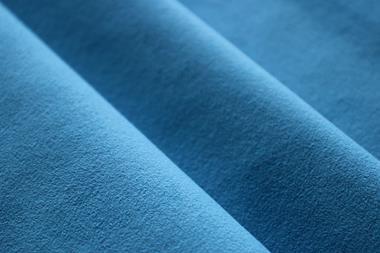This year’s Car Design Review is the very first book to be wrapped with Dinamica, the popular car interior fabric. Despite the suede-look material being easy to treat, Car Design News travelled all the way to Flanders fields to unearth the ideal bookbinder for the job. Sepeli in Evergem, in the distant shadow of Ghent, turns out to be the one, a business that loves to scan the ultimate boundaries of bookbinding.
Traditional methods still prevail for such specialist work
Sepeli is small and quite hard to find. With 17 collaborators on the payroll, it doesn’t want to grow any bigger. And it doesn’t get lost in catchy big words, massive signs or flashy websites. These are hardworking people with great experience, an open eye for the future and very little fuss. Yet the company and its owner, Frank Vermeulen, are as flexible as Dinamica itself. He doesn’t need a suit or many rules to earn respect. His heart does the talking. Folding machine operator Vicky is even allowed to bring in her two Alaskan Malamut dogs, Washoe and Kitaani, every day.
Miko’s marketing manager, Benedetta Terraneo, considers colour options
Frank himself performed the very first tests to get the Dinamica neatly around the cardboard cover: “Thankfully this fabric is both strong and flexible. Still it took some experimenting to find out the best glue to use. Afterwards, the entire print run will slip through Chantal’s hands, as she first fixes the glue on the fabric’s roughest side, then precisely positions the cartons, then hard presses each side, only to push the cover through two rollers to make sure the material really looks tight.”
Preparing the ‘balencier’ for the four-stage stamping process
Geert Claeremans comes next. He’s operated the ‘balancier’ for more than 25 years: “The book designers went all the way here. So we’ll need four embossing stages, each with a specific cupper stamp: one for the outline of the cars, one for the logo on the back, one for the Car Design Review headline on the side and one for the extra inscription on the cover. Again, all manually. This material is too precious for fully automated print machinery.
Debossing and foil on CDR 2 prototype
“I guess it’ll take around four days to get the job done. Fortunately, the Dinamica cloth allows incredible detailing, while it easily copes with the 150° Celsius the alloy foil needs to stick. We just had to search a little for the right foil. Even though the press weighs a healthy 50 kilos, the Dinamica bears it without problems.”
Prototype of CDR 2 stands up to the 300kg pressing process
Geert also manually glues the body into the covers. Luckily, the cloth easily takes 300 kilos in the press, needed to ensure the book’s interior is properly attached. Obviously, the 90 kilos to press the joint aren’t an issue either.
The finished article
Despite the many stages each book goes through, this really is a handcraft business. Certainly at Sepeli’s. “Not everybody is equipped for such precision work. Most of our colleagues are just too automated. But we love these challenges,” says Frank. And it’s totally worth it. In the end, it’s not just another fine piece in Sepeli’s portfolio, but more importantly a unique book in your collection.
Cover to cloth…
The vibrant blue material wrapped around Car Design Review 2 is an ecological microfibre produced using recycled polyester and a water-based process using no harmful solvents. The colour was chosen to chime with some of the key cars of the year. Miko then used their expert facilities to produce the amount of Dinamica fabric required.

















